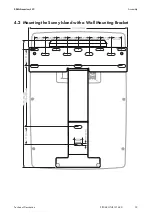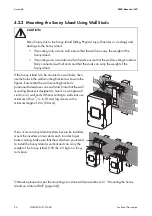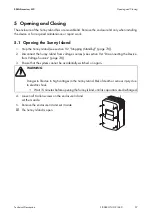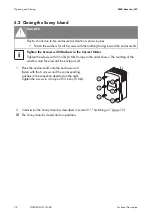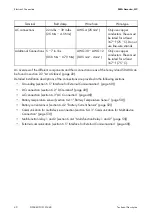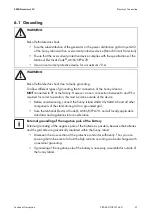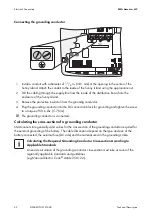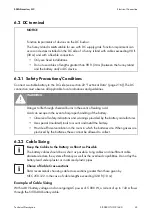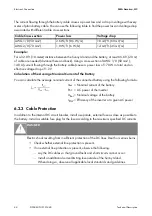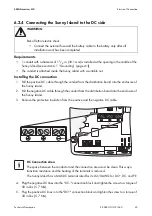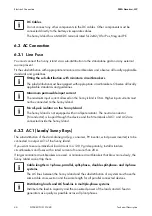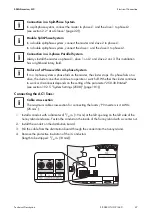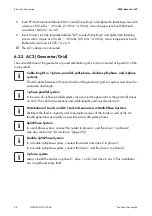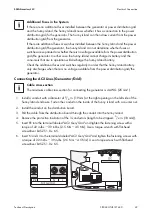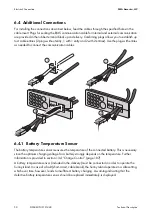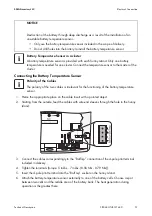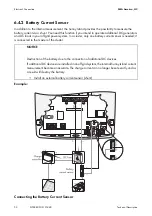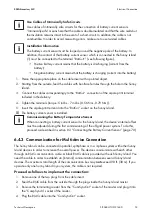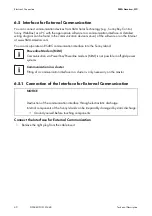
Electrical Connection
SMA America, LLC
46
SI5048U-TUS121440
Technical Description
6.3 AC Connection
6.3.1 Line Fuse
You must connect the Sunny Island via a sub‑distribution to the stand‑alone grid and any external
source present.
Fit the sub‑distribution with appropriate miniature circuit‑breakers and observe all locally applicable
standards and guidelines.
6.3.2 AC1 (Loads/Sunny Boys)
The sub‑distribution of the stand‑alone grid (e.g. consumer, PV inverter, wind power inverter) is to be
connected to output AC1 of the Sunny Island.
If you want to secure individual load circuits in a 120 V grid separately, install miniature
circuit‑breakers and fuses with a rated current of no more than 20 A.
If larger miniature circuit‑breakers are used, or miniature circuit‑breakers that blow more slowly, the
Sunny Island cannot trip them.
DC Cables
Do not connect any other components to the DC cables. Other components must be
connected directly to the battery via separate cables.
The Sunny Island has a MAX DC terminal rated for 2x#2/0 for Pos, Neg and PE.
Fitting the sub‑distribution with miniature circuit‑breakers
The sub‑distribution must be equipped with appropriate circuit breakers. Observe all locally
applicable standards and guidelines.
Maximum permissible input current
The maximum input current allowed on the Sunny Island is 56 A. Higher input currents must
not be connected to the Sunny Island.
No all‑pole isolator on the Sunny Island
The Sunny Island is not equipped with an all‑pole isolator. The neutral conductor
(N conductor) is looped through the device and the N terminals of AC1 and AC2 are
connected inside the Sunny Island.
Cable lengths in 1‑phase, parallel, split‑phase‑, double split‑phase‑ and 3‑phase
systems
The AC lines between the Sunny Island and the sub‑distribution of a system must have the
same cable cross‑section and the same length for all parallel connected devices.
Distributing loads and AC feed‑ins in multiple‑phase systems
Distribute the feed‑in capacity and the consumed power of the loads and AC feed‑in
generators as equally as possible across all plant phases.


